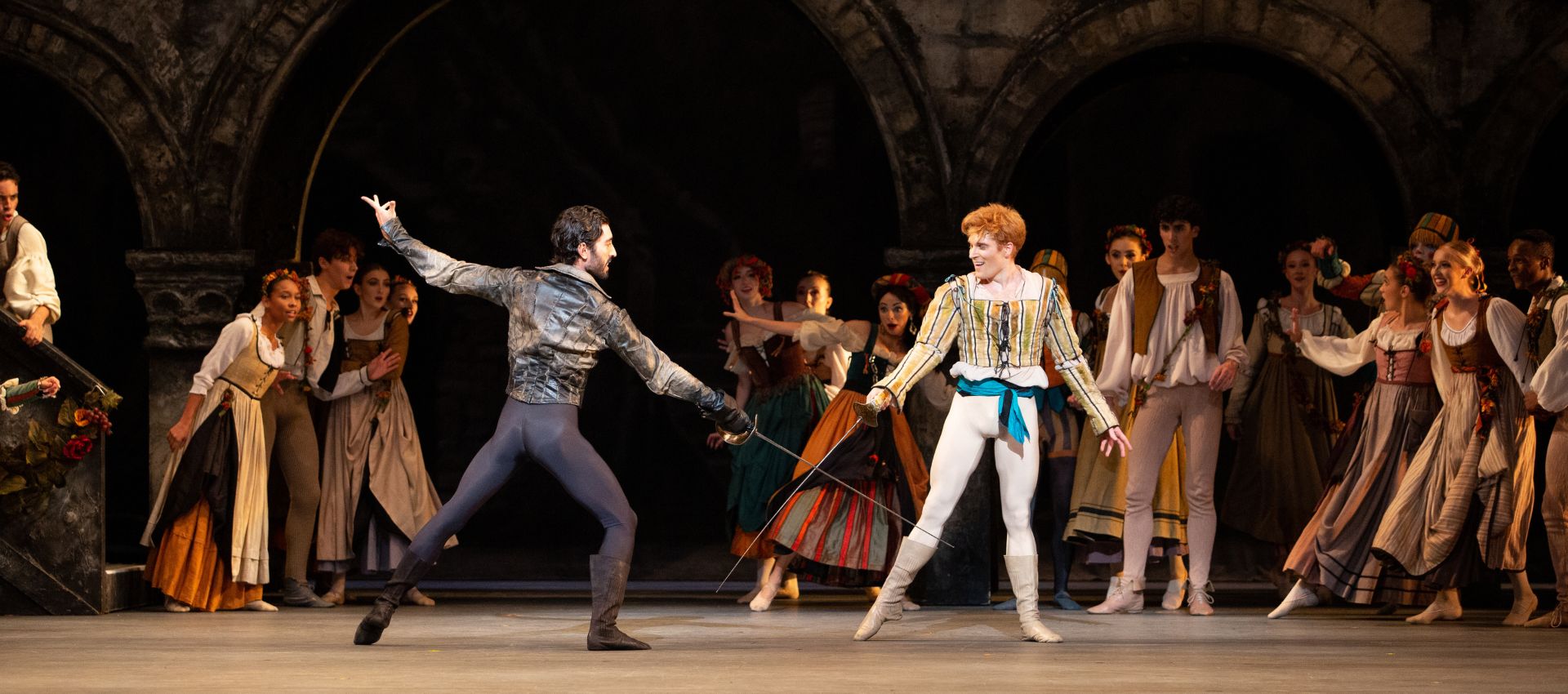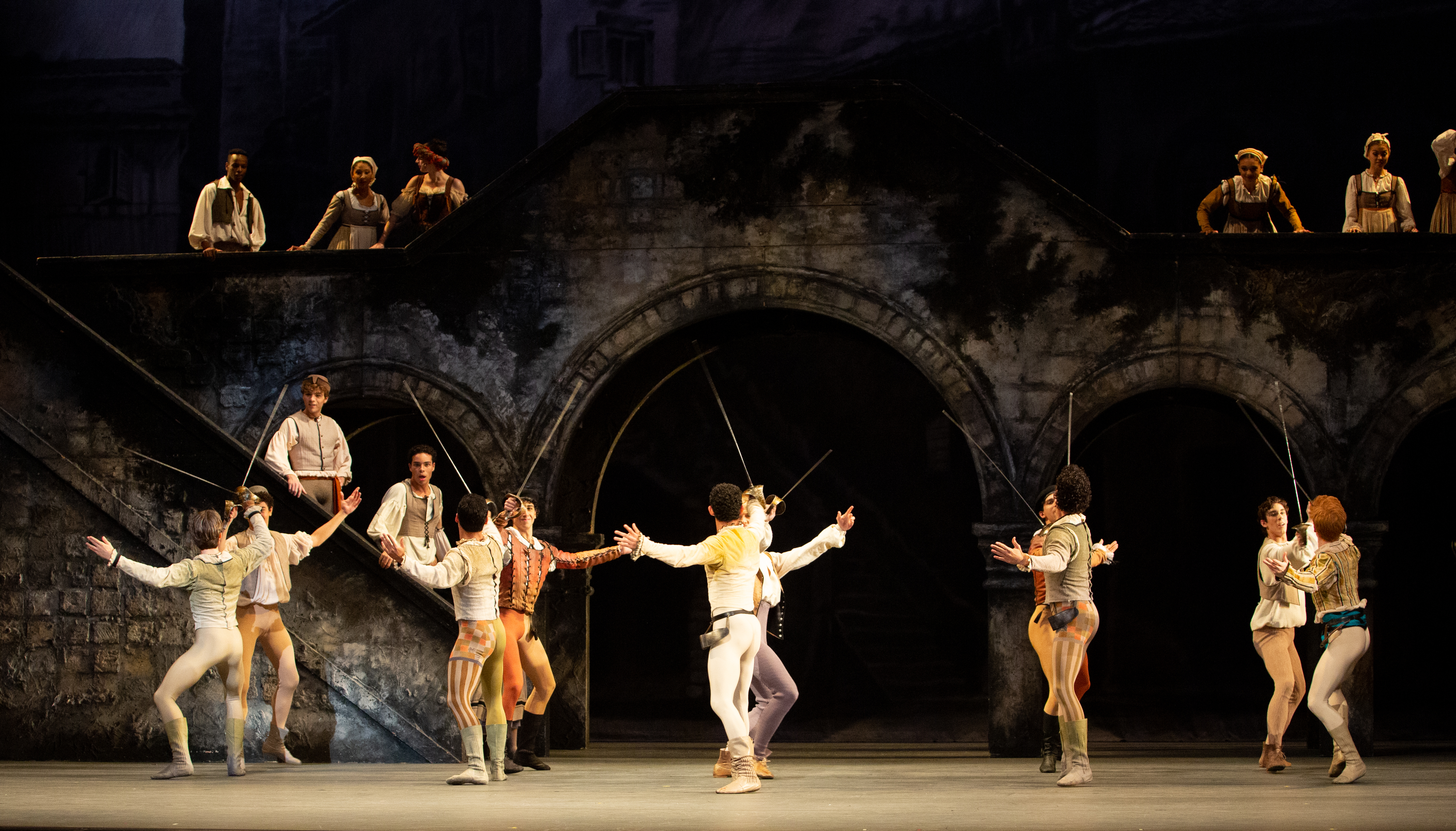
Behind the Scenes: Romeo & Juliet Fight Choreography with Christian Kelly-Sordelet
We spoke with fight director Christian Kelly-Sordelet to get more insight into the choreography for Romeo and Juliet. Kelly-Sordelet has been involved in over 70 Broadway productions including The Lion King and Beauty and the Beast. Learn more about what it takes to safely and expertly choreograph sword fighting on stage in our Q&A below.
How did you get your start in fight choreography?
I first started working with my father Rick Sordelet and my first exposure to it was that I would follow him around. It was an environment where adults would really listen to your opinion as a kid and value it. I liked that, the influence I had early on in this world. It made sense to me. I started doing stunt kid jobs with my father at 15 years old, and I had learned enough to start working professionally. I continue learning on the job, I’ll never know enough.

What are the most important rules or principles of stage combat?
Obviously, safety is the most important thing. It’s easy to sacrifice under pressure because there is never enough time. Time management becomes very important to make the most of every minute while not stressing your performers. They can’t feel rushed, they must be supported and encouraged. Professionalism is also extremely important. How you communicate with your team. The goal is to remain safe but to tell a story and let the audience be able to take a ride emotionally. It’s tedious to get a good result. It takes time that isn’t always available, so being adaptable and communicating efficiently is key.
Can stage combat be dangerous?
Even in the best of circumstances, it can be, yes. We do everything possible to keep the risk level to a minimum. Blades are dulled and we train many techniques to keep from hurting one another but of course, accidents are always possible. Essentially the process of our work is to continue to bring our possibility for harm to be as close to zero as possible at any given moment.

What makes the fight choreography in a ballet like Romeo and Juliet interesting or different?
Great question! What makes the Ballet special is that the dance/fight choreography has been preserved since its creation. So, my job is not to create the fight choreography but to learn it, teach it, and explain it. “What is this move? What am I trying to do here?” – That’s the question I am answering all day.
The ballet dancer’s talent goes beyond just the most capable athletes/dancers; they are also incredibly talented storytellers, and masters of physical communication. They need to know what story they are telling with each movement. I learned a great deal about acting and storytelling from working with them. Their drive and discipline are absolutely infectious. They are truly a dream team to work with.
What’s the most challenging aspect of your job? The most rewarding?
Absolutely the most challenging thing is always time. It’s a lot of elements to balance the comfort and safety of performers. Safety is number one. Satisfaction of the director and audience, storytelling, and style is the next most important.
It’s very gratifying when I can look at something that we have all built together, after taking it apart so many times. Each moment gets put under a microscope and just watching and enjoying it as an audience member, that’s truly the best part for me. I know when it feels good to watch it like that, it also must feel good for them to perform, that makes me happy. It’s like exchanging gifts with friends, it’s that sort of feeling when it goes well. I’m always lucky to have that kind of experience with Miami City Ballet!
Be sure to check out the final three performances of Romeo & Juliet at the Kravis Center in West Palm Beach. See dates and times here:
Saturday November 12 at 2PM
Saturday November 12 at 7:30PM
Sunday November 13 at 1PM
Photo credits: 1. Damian Zamorano and Alexander Peters in Romeo and Juliet. Choreography by John Cranko. © Alexander Iziliaev 2. Andrei Chagas and Alexander Kaden rehearsing Romeo and Juliet. Choreography by John Cranko. © Alexander Iziliaev 3. MCB Dancers in Romeo and Juliet. Choreography by John Cranko. © Alexander Iziliaev
